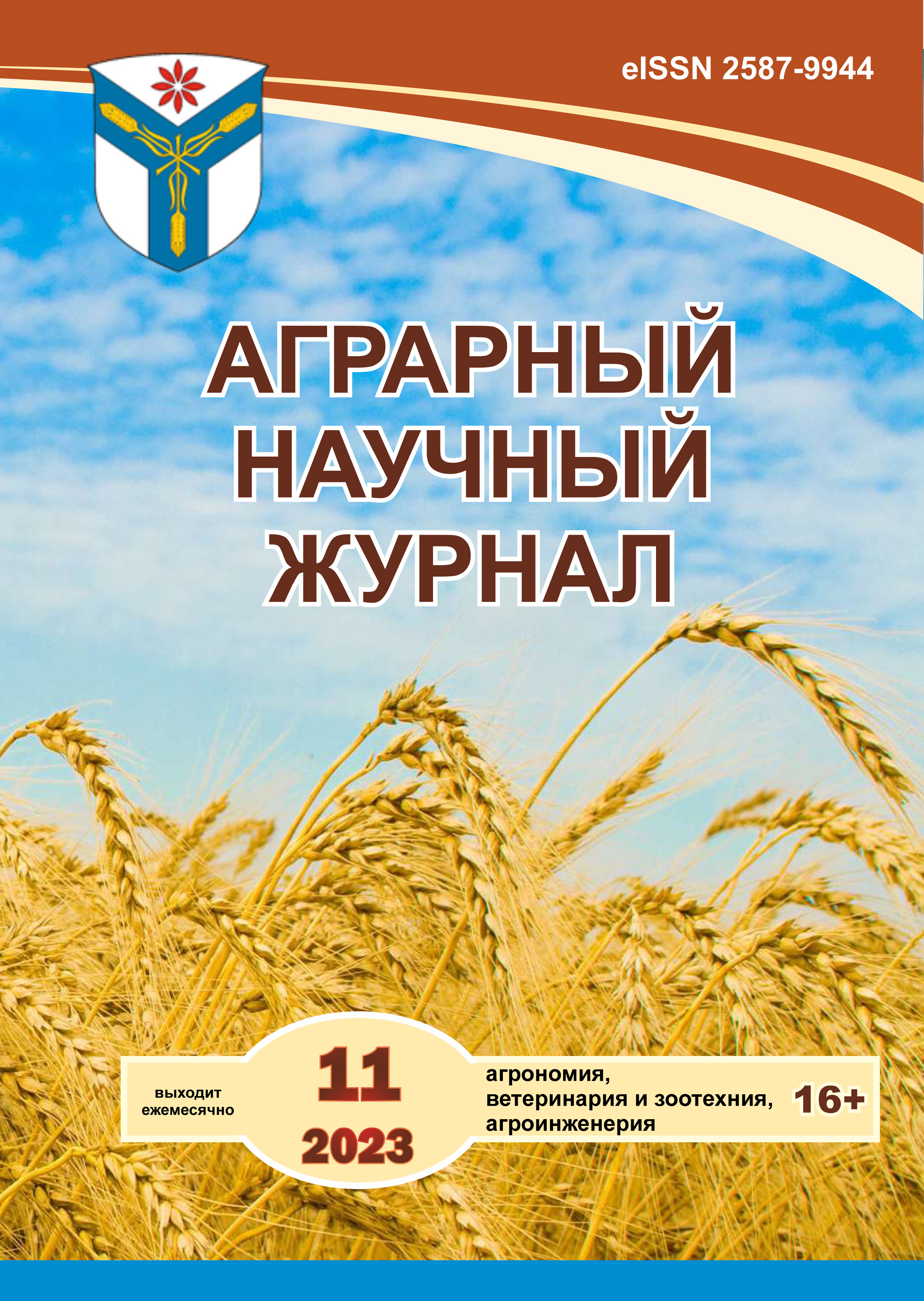Assessment of clinical and biochemical parameters in calves of the dairy period when introducing a feed additive into the diet
DOI:
https://doi.org/10.28983/asj.y2023i11pp148-153Keywords:
calves, diet, selenium nanoparticles, cobalt, additive, clinical indicators, blood, urineAbstract
This article examines the clinical health indicators of dairy calves, as well as data on laboratory tests of blood and urine, before and after conducting a scientific experiment on adding selenium and cobalt aspartate nanoparticles to their diet in the form of a feed additive. It was established that the hematological parameters of calves throughout the experiment did not go beyond the reference values for this type of animal. In the course of studying the biochemical parameters of the blood serum of calves, it was established that they, as well as the parameters of the clinical blood test, did not go beyond the physiological values for these animals throughout the experiment. At the same time, some differences were identified between groups of animals. Thus, a decrease in the activity of the alanine aminotransferase enzyme in calves of the first experimental group relative to control animals was reliably established. At the same time, a significant increase in the concentration of magnesium in the blood serum of experimental animals relative to control animals was established.
Downloads
References
Влияние разного уровня наночастиц селена и аспарагината кобальта на сохранность и продуктивные качества телят / И. И. Калюжный [и др.] // Аграрный научный журнал. 2023. № 9. С. 98–101.
Котарев В. И., Большаков В. Н., Брюхова И. В. Влияние кормовых добавок на микробное сообщество рубцовой жидкости телят // Ветеринарный фармакологический вестник. 2021. № 1(14). С. 65–74. DOI: 10.17238/issn2541-8203.2021.1.65.
Красноперов А. С., Малков С. В. Влияние кормовой добавки на основе диоксида кремния на иммунологические показатели телят с диспепсией // Эколого-биологические проблемы использования природных ресурсов в сельском хозяйстве: материалы IV Междунар. науч.-практ. конф. молодых ученых и специалистов, Екатеринбург, 07–08 июня 2018. Екатеринбург: ООО «Уральское издательство», 2018. С. 213–220.
Красочко П. А., Новожилова И. В. Кормовая добавка с пробиотиком «Муцинол» в рационе телят // Животноводство и ветеринарная медицина. 2018. № 4. С. 42–45.
Наумов Е. М., Куваев И. В., Хаустов В. Н. Некоторые особенности воздействия на рост и развитие телят в молочный период кормовой добавки ТТК(г) // Вестник Алтайского государственного аграрного университета. 2021. № 8(202). С. 70–75.
Панова Н. А. Показатели клинического исследования крови телят разного возраста // Академическая публицистика. 2020. № 12. С. 457–460.
Microbial status and rumen enzyme profile of crossbred calves fed on different microbial feed additives / N. Agarwal et al. // Letters in Applied Microbiology. 2002. Vol. 34. No. 5. P. 329–336.
The effect of probiotics, phytobiotics and their combination as feed additives in the diet of dairy calves on performance, rumen fermentation and blood metabolites during the preweaning period / B. Stefa?ska et al. // Animal Feed Science and Technology. 2021. Vol. 272. P. 114738.
Downloads
Published
Issue
Section
License
Copyright (c) 2023 The Agrarian Scientific Journal

This work is licensed under a Creative Commons Attribution-NonCommercial-NoDerivatives 4.0 International License.








